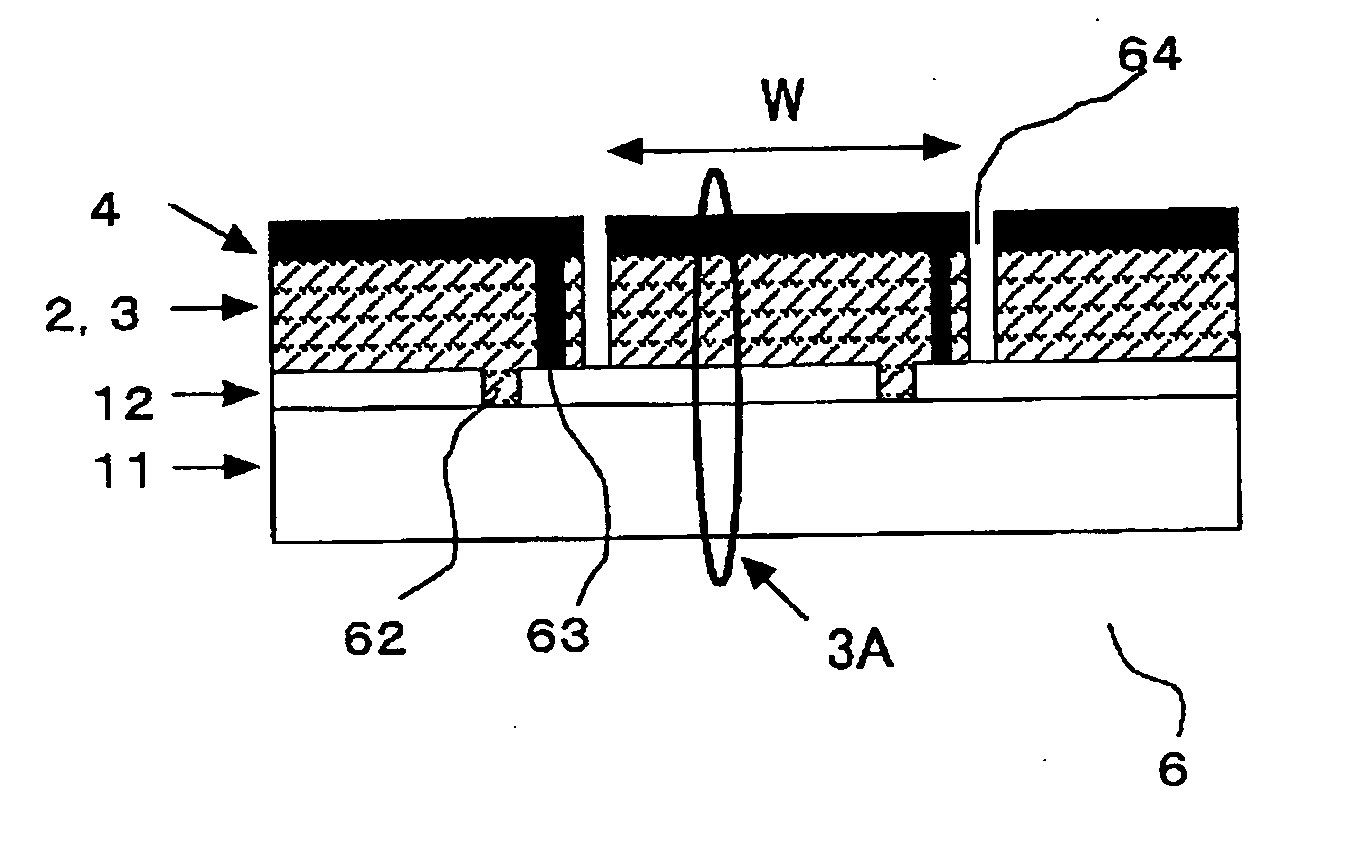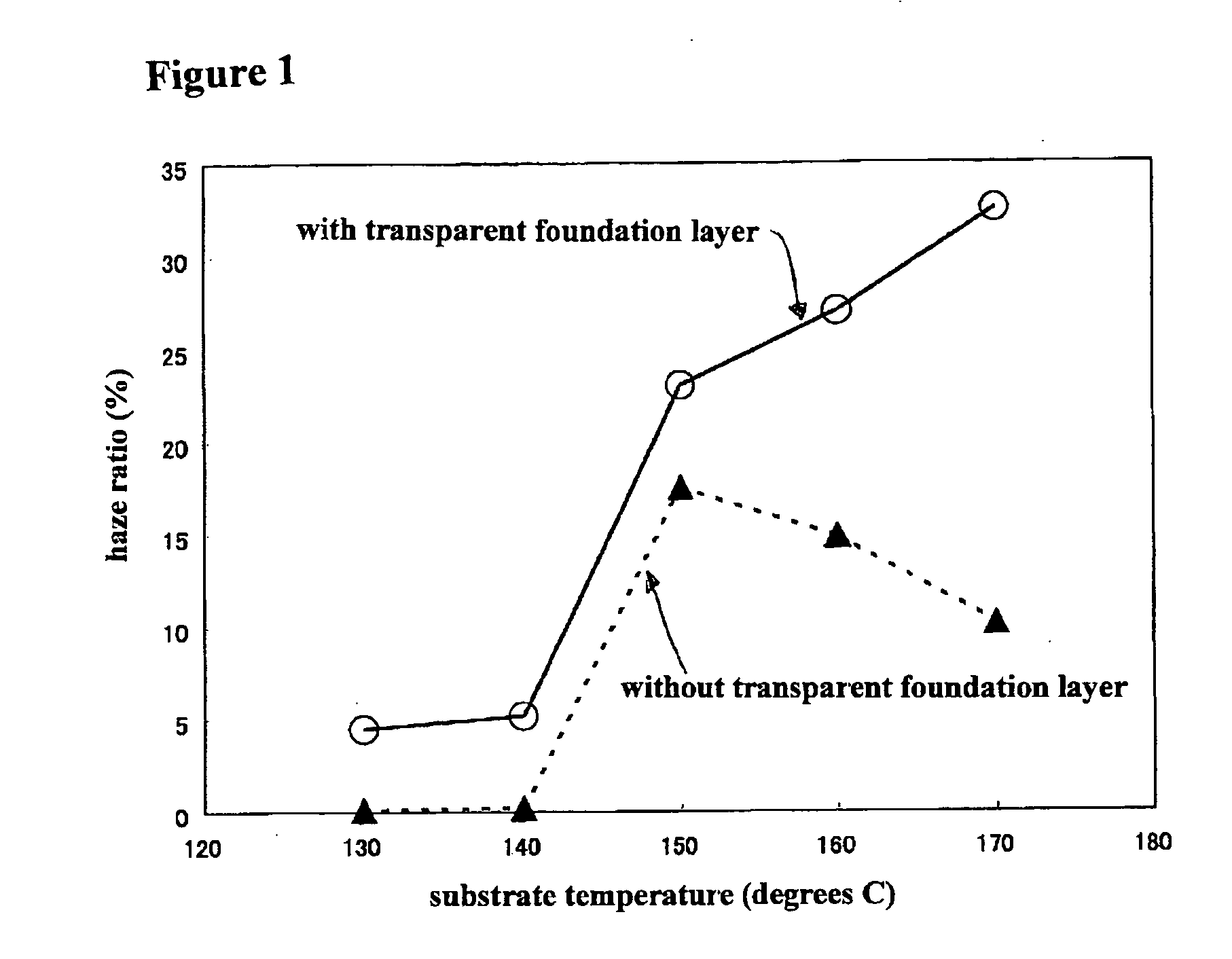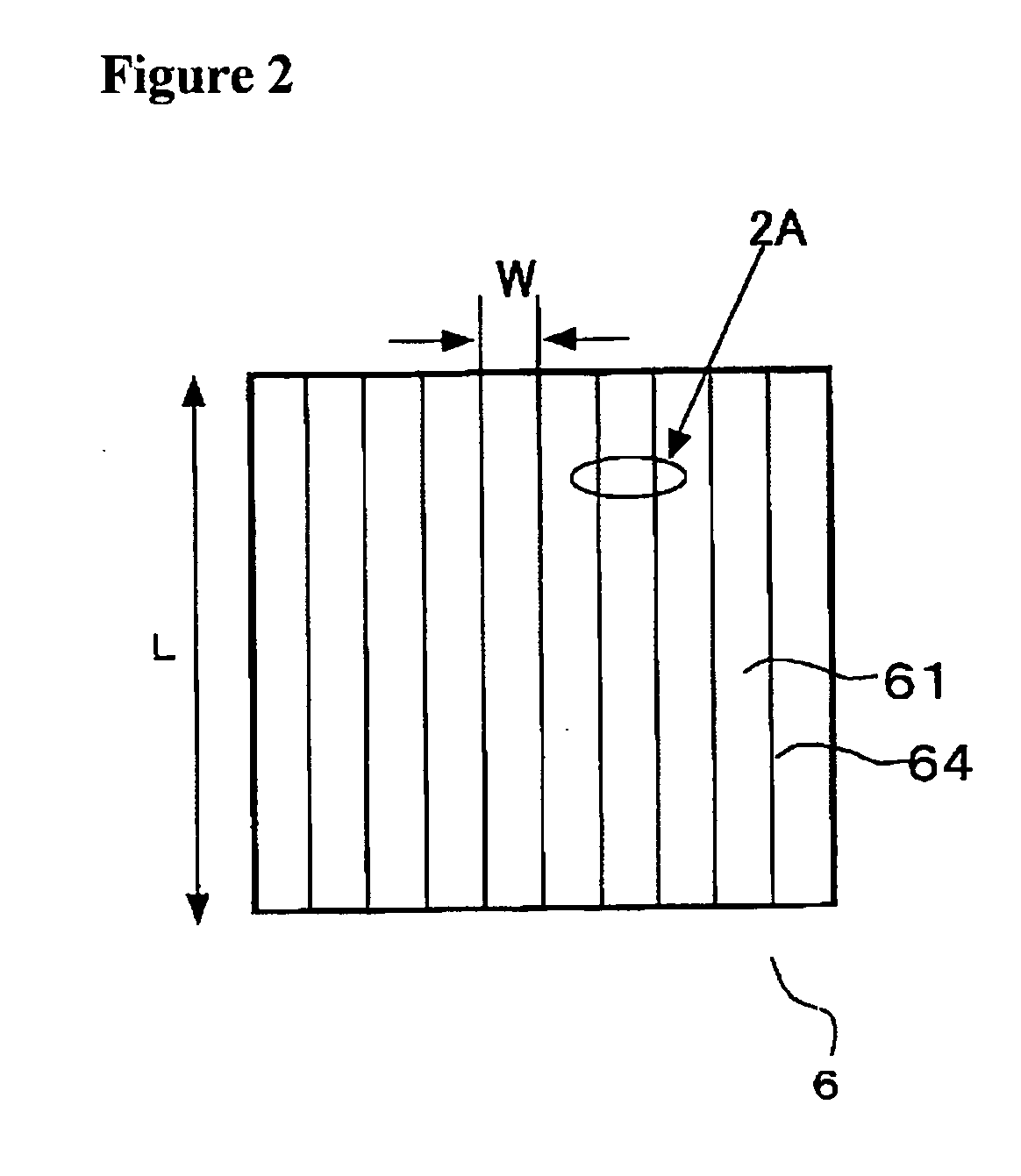Substrate for thin-film solar cell, method for producing the same, and thin-film solar cell employing it
a technology substrates, which is applied in the direction of photovoltaics, electrical devices, semiconductor devices, etc., can solve the problems of reducing the formation temperature of the transparent electrode layer and the formation temperature of the silicon based semiconductor layer, and the inability to obtain effective “light trapping” effect so as to achieve efficient light trapping effect, improve the performance of thin film solar cells, and increase the uneven effect of substrates
- Summary
- Abstract
- Description
- Claims
- Application Information
AI Technical Summary
Benefits of technology
Problems solved by technology
Method used
Image
Examples
example 1
[0097] A thin film solar cell 5 as shown in FIG. 6 was produced as Example 1.
[0098] A glass substrate of 0.7 mm in thickness and measuring 125 mm per side was used as a transparent base material 111, and a transparent foundation layer 112 including SiO2 micro-particles 1121 was formed on the glass substrate. A coating liquid used for forming a transparent foundation layer 112 was obtained in a manner that tetra-ethoxy silane was added to a mixed liquor of dispersion liquid of a spherical silica having a particle diameter of 50 nm, water, and ethyl cellosolve, and then hydrochloric acid was further added to hydrolyze the silica. After applying the coating liquid on the glass substrate 111 with a printing machine, the substrate was dried at 90 degrees C. for 30 minutes, and then heated at 350 degrees C. for 5 minutes to obtain a transparent insulating substrate 11 having fine unevenness formed on a surface thereof. When a surface of this transparent insulating substrate 11 was observ...
example 2
[0106] Also in Example 2, an integrated type crystalline silicon based thin film solar cell 6 was produced in a same manner as in Example 1, except for having used a substrate having an area of 910 mm×455 mm and a thickness of 4 mm as a glass substrate 111. An RMS of the transparent foundation layer 112 thus formed on this condition gave 9.8 nm.
[0107] Although ultrasonic cleaning was given after laser scribe process of a back electrode layer isolation groove 64, a film peeling area on the substrate was not identified. A number of stages of the cell connected in series after integration gave 48 stages.
[0108] By irradiating light of AM1.5 with a quantity of light of 100 mW / cm2, thus obtained integrated type silicon based thin film solar cell 6 was measured for an output characteristic. An open circuit voltage (Voc) per one step gave 0.541 V, a Jsc 23.6 mA / cm2, an F. F. 71.7%, and a conversion efficiency 9.2%.
[0109] A conversion efficiency was maintained although the integrated type...
example 3
[0110] In Example 3, an integrated type silicon based thin film solar cell 6 was produced almost in a same manner as in Example 2, except for having intentionally set the RMS greater using SiO2 micro-particles 1121 having a particle diameter of 80 nm in formation of the transparent foundation layer 112. An RMS of the transparent foundation layer 112 thus formed on this condition gave 19.3 nm. Although ultrasonic cleaning was given after laser scribe process of a back electrode layer isolation groove 64, a film peeling area on the substrate was not identified.
[0111] By irradiating light of AM1.5 with a quantity of light of 100 mW / cm2, thus obtained integrated type silicon based thin film solar cell 6 was measured for an output characteristic. An open circuit voltage (Voc) per one step gave 0.532 V, a Jsc 24.3 mA / cm2, an F. F. 70.5%, and a conversion efficiency 9.1%.
PUM
 Login to View More
Login to View More Abstract
Description
Claims
Application Information
 Login to View More
Login to View More - R&D
- Intellectual Property
- Life Sciences
- Materials
- Tech Scout
- Unparalleled Data Quality
- Higher Quality Content
- 60% Fewer Hallucinations
Browse by: Latest US Patents, China's latest patents, Technical Efficacy Thesaurus, Application Domain, Technology Topic, Popular Technical Reports.
© 2025 PatSnap. All rights reserved.Legal|Privacy policy|Modern Slavery Act Transparency Statement|Sitemap|About US| Contact US: help@patsnap.com



